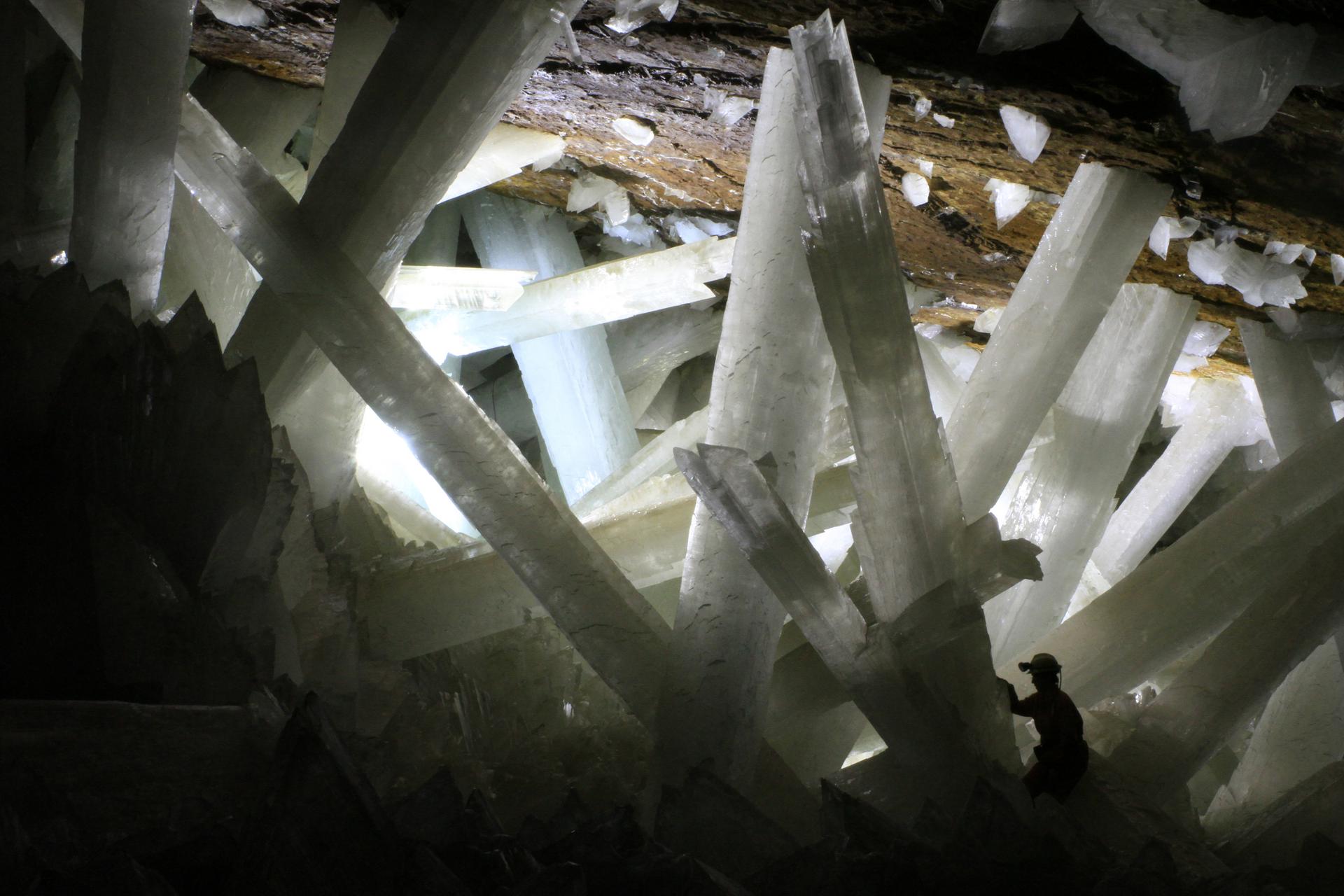Monolithic Dome Gypsum Storages

Stunning, giant crystals made of gypsum selenite in the Cave of the Crystals in Mexico—300 meters below ground. They are considered to be the largest natural crystals in the world.
Gypsum is the most common sulfate mineral in the world. It’s mined from large, natural deposits to use in building materials, fertilizers, and even toothpaste.
Gypsum is calcium sulfate dihydrate (CaSO4·2H2O), a soft mineral most commonly found as white crystals called alabaster—ancient cultures used alabaster to create elaborate sculptures. It can also form into translucent crystals called selenite.
Uses
According to the USGS, “Gypsum, one of the most widely used minerals in the world, literally surrounds us every day. Most gypsum in the United States is used to make wallboard for homes, offices, and commercial buildings; a typical new American home contains more than 7 metric tons of gypsum alone. Moreover, gypsum is used worldwide in concrete for highways, bridges, buildings, and many other structures that are part of our everyday life. Gypsum also is used extensively as a soil conditioner on large tracts of land in suburban areas, as well as in agricultural regions.”
It’s also used in plaster of paris, gypsum blocks, baking dough conditioner, mead, shampoo, dentistry molds, mushroom cultivation, tofu, blackboard chalk, concrete hardener retardant, and so much more.
Gypsum is non-combustible and non-flammable. In fact, gypsum board—also known as wallboard, drywall, Sheetrock—is considered a temporary fire barrier during a structure fire.
Storage Challenges
Mined gypsum is crushed and purified into a powdery material then stored in large piles. Because it is hydrophilic, it absorbs moisture from the air that can bind gypsum together in a “caking” process. Dust from dry bulk gypsum is also a common problem. Wind over an open pile is an environmental hazard and loses product. The conundrum is that keeping gypsum dry increases dust while adding moisture to control dust increases caking.
Processing gypsum ore requires heat, and the resulting product is often scorching when sent for storage. When stored inside, the heat can induce condensation on the building walls—even in dry environments—increasing moisture, caking product, and corroding the building.
The Monolithic Dome naturally addresses these problems.
Monolithic Dome Gypsum Storage
Monolithic Dome construction uses a PVC coated membrane, several inches of polyurethane insulation, and steel-reinforced concrete to create a strong, waterproof, insulated structure. Stored gypsum is protected from wind and precipitation in an air-tight environment.
The high-density concrete and insulation work together to resist temperature changes, allowing hot incoming material time to cool—preventing condensation, reducing caking, and eliminating corrosion.
The air-tight structure keeps gypsum dust inside and away from the environment. It enables flexibility for controlling dust during loading and unloading operations.
The Monolithic Dome is a free-span structure allowing maximum storage plus free movement by material handling equipment.
The dome is incredibly strong. The column-free structure supports conveyor equipment on top of the dome as well as suspended equipment inside. The concrete wall resists impacts by front-end loaders. And the dome will protect the product during storms and other disasters.
Design Considerations
Bulk gypsum powder is a heavy product at 100 pounds per cubic foot (16 kg/m³) with an angle of repose of 35 degrees. Gypsum material is transportable via conveyors and can pour into a cone-shaped pile.
The specific design of a Monolithic Dome storage depends on the facility. What is the current workflow? What equipment already exists? How much gypsum will be stored? How much land is available?
Although implementation details differ with every project, generally, there are two basic types—pile cover or load-bearing.
Pile Cover Storage Dome
A “pile cover” storage dome is a low-profile dome that covers the material cone with little or no loading of gypsum powder against the dome wall.
Gypsum is loaded via a conveyor through the head house, dropped into the dome, and forms a cone-shaped pile that flows out until it reaches the dome’s diameter and height. There is little to no product pressed against the dome, so it’s safe for front-end loaders to enter and remove the gypsum.
A low-profile storage dome is ideal for facilities migrating from open or semi-enclosed pile cones that want the Monolithic Dome’s advantages, but already have the equipment and workflow for managing the pile.
Pros
- Integrates with existing workflow
- Uses existing material handling equipment
- Standard dome construction
- The free-span structure covers the entire pile
Cons
- Requires more land
- Less automation
- Manual unloading
Load-Bearing Storage Dome
A hemispherical or silo-shaped Monolithic Dome allows more storage capacity for available real estate. This is because the dome itself is load bearing—it not only supports the conveyor equipment and head house, but it also contains the product piled inside against the dome wall.
Gypsum material is conveyed to the dome’s top where it drops inside, forming a deep pile against the dome. The dome is constructed with more steel and concrete to contain the pile forces.
An automated unloading system is more common with this storage type because the product pile is under pressure. Automation typically unloads the entire dome without intervention, lowering overall labor costs and increasing throughput.
A load-bearing storage dome should be considered for new facilities without existing infrastructure or need to dramatically increase storage capacity—or there is limited available land.
Pros
- Requires less land per storage volume
- Customized reclaim systems
- Fully automated unloading
- Greater usage of storage volume
Cons
- Heavy-duty dome construction
- Investment for reclaim system
